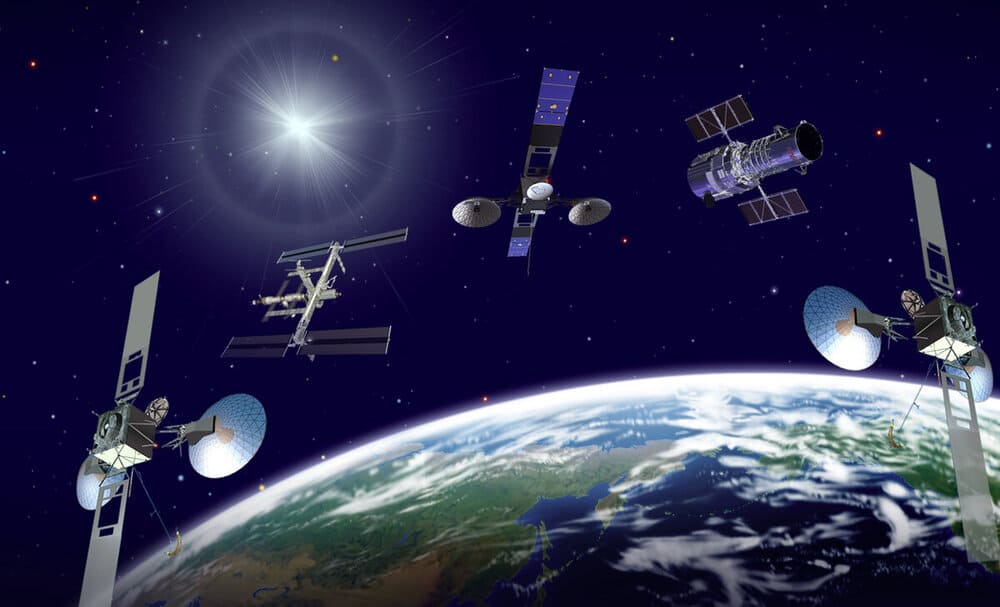Artificial satellites have revolutionized scientific research across a multitude of disciplines. Since the launch of Sputnik 1 in 1957, satellites have become indispensable tools for gathering data, observing natural phenomena, and facilitating communication. Their impact is profound in several key areas:
1. Earth observation and climate science
Satellites equipped with remote sensing technology monitor Earth’s environment in unprecedented detail. They provide critical data on climate change, weather patterns, and natural disasters. Instruments like the Moderate Resolution Imaging Spectroradiometer (MODIS) on NASA’s Terra and Aqua satellites capture images of the entire Earth’s surface every 1 to 2 days, helping scientists track changes in land use, vegetation, and atmospheric conditions.
Key contributions:
- Climate monitoring: satellites measure atmospheric temperature, greenhouse gas concentrations, and ice sheet dynamics, contributing to climate models and predictions.
- Disaster response: real-time data from satellites aid in predicting and responding to natural disasters such as hurricanes, earthquakes, and floods, potentially saving lives and reducing economic losses.
2. Space exploration and astronomy
Satellites extend our reach into the cosmos, offering insights into the universe’s origins, structure, and evolution. Telescopes like the Hubble Space Telescope and the upcoming James Webb Space Telescope provide detailed images and spectra from distant stars, galaxies, and other celestial bodies.
Key contributions:
- Astrophysics: satellites detect electromagnetic radiation across the spectrum (radio, infrared, visible, ultraviolet, X-rays, gamma rays), revealing the properties of astronomical objects and phenomena.
- Planetary science: missions like the Mars Reconnaissance Orbiter (MRO) gather high-resolution data about the surface and atmosphere of Mars, enhancing our understanding of the planet’s geology and potential for life.
3. Communications and navigation
Communication satellites enable global telecommunication networks, broadcasting television, radio, and internet services to remote areas. Navigation satellites, forming systems like the Global Positioning System (GPS), provide precise location data for various applications, from everyday navigation to scientific field research.
Key contributions:
- Global connectivity: Satellites bridge the digital divide, bringing communication services to isolated regions, fostering education, economic development, and social connectivity.
- Precision navigation: GPS technology supports various scientific endeavors, including geological surveys, wildlife tracking, and the synchronization of scientific instruments.
4. Geospatial and environmental sciences
Geospatial satellites map the Earth’s surface, creating detailed topographic maps and monitoring environmental changes. These satellites assist in managing natural resources, urban planning, and tracking biodiversity.
Key contributions:
- Resource Management: data from satellites inform the sustainable management of forests, water bodies, and agricultural lands.
- Biodiversity conservation: satellites track the movements of wildlife, monitor habitat loss, and support conservation efforts by providing data on ecological changes.
5. Scientific collaboration and data sharing
Satellites promote international scientific collaboration by enabling real-time data sharing and joint missions. Initiatives like the International Space Station (ISS) serve as platforms for multinational research in microgravity and other space-related sciences.
Key contributions:
- Global research networks: satellite data is accessible to researchers worldwide, fostering collaborative projects and the sharing of scientific findings.
- Interdisciplinary studies: satellites support a range of scientific disciplines, encouraging interdisciplinary research and integrated approaches to solving complex global challenges.
Artificial satellites have become cornerstones of modern scientific research, offering tools and data that drive discoveries and innovations across various fields. Their ability to observe, measure, and communicate from orbit transforms our understanding of Earth and the universe, paving the way for a future where science and technology continue to advance hand in hand.


